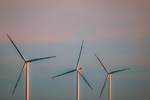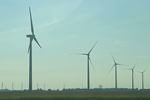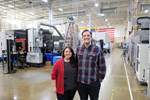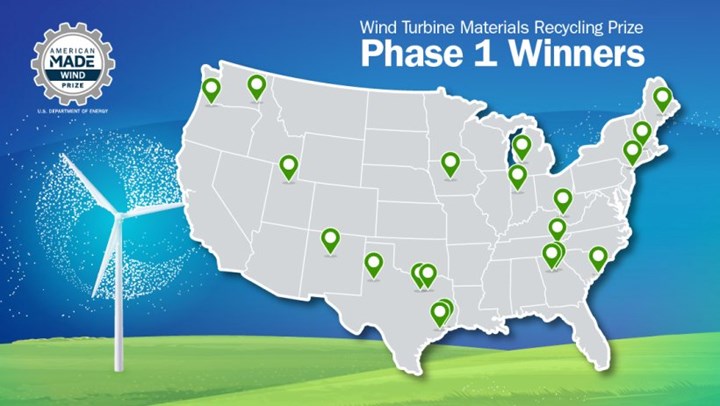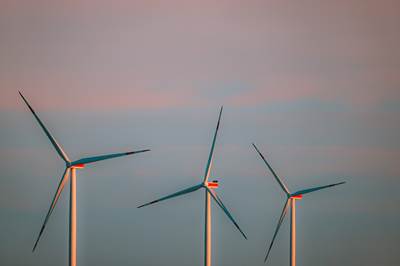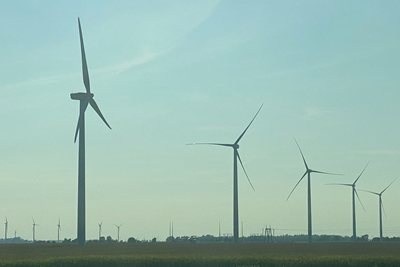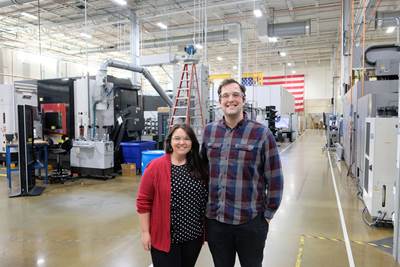DOE announces Wind Turbine Materials Recycling Prize winners
Twenty U.S. teams from 15 states were selected for Phase 1 of funded efforts to develop, mature and commercialize recycling technologies for FRPs and rare earth elements used in wind turbines.
The U.S. Department of Energy (DOE, Washington, D.C., U.S.) has announced 20 winners of the first phase of the Wind Turbine Materials Recycling Prize. The $5.1 million, two-phase competition running from 2023-2024, funded by the Bipartisan Infrastructure Law, aims to develop a cost-effective and sustainable recycling industry for key wind turbine materials not currently recycled commercially: fiber-reinforced composites and rare earth elements.
Competition efforts, in addition to helping the environment by reducing the U.S.’ need to extract and process raw materials, will help:
- Adopt commercially mature recycling technologies from other industries and create synergistic collaborations.
- Develop recycling technologies and processes that have not yet been applied commercially in the U.S.
- Enhance domestic energy security by reducing the nation's dependence on foreign materials.
- Commercialize technologies that have the potential to create well-paying jobs and grow the domestic wind energy industry.
- Attract new talent and expertise to the wind energy industry and engage entities that have not previously worked with DOE.
- Expand DOE's ongoing efforts to advance wind turbine materials recycling.
- Achieve a carbon-pollution-free power sector by 2035 and net-zero emissions by 2050.
About 85-90% of the mass of a wind turbine is made of materials that can already be commercially recycled. This prize aims to close the gap on the remaining 10-15% of unrecyclable material, which is primarily carbon fiber and fiberglass (found in wind turbine blades, nacelle covers and hub covers), and rare earth elements like neodymium and dysprosium (found in generators).
Twenty teams from 15 states were selected as winners of the Initiate! phase of the prize for their innovative ideas to enhance wind material recycling technologies and processes. Each of the winning teams received $75,000 and an invitation to move into the final phase of the competition, Accelerate!, where they will develop prototypes of their technologies. Up to six teams will be named winners and receive a cash prize of $500,000 and vouchers valued at $100,000 to work with DOE national laboratories.
“These winning teams presented innovative technology ideas that exemplify the creative, problem-solving skills we need to build a highly sustainable wind turbine recycling industry,” says Jeff Marootian, principal deputy assistant secretary for energy efficiency and renewable energy. “On top of that, these domestic recycling solutions enhance our energy security by reducing the nation’s dependence on foreign materials.”
The Phase One winning teams are:
- A New Fiber Spinning for Composite Recycling (Athens, Georgia)
- A Novel Method for Recycling Neodymium Magnet (Salt Lake City, Utah)
- Blades for Large-Format Additive Manufacturing (Orono, Maine)
- Chemolysis Recycling of All Turbine Blade Material (Albuquerque, New Mexico)
- Circular Mechanical Recycling of Wind Turbines (Charleston, South Carolina)
- Composite Fiber Recovery and Resin Recycling (Amherst, Maine)
- Continuous Chemical Recycling at Ambient Pressure (Pullman, Washington)
- Domestic Rare Earth Recovery From Wind Turbines Using ADR (Boone, Iowa)
- Flash Composite Recycling: Turbine Blades to Silicon Carbide (Houston, Texas)
- Hybrid Composites from Wood and Wind Turbine Blades (Denton, Texas)
- Launching Circular Composite Infrastructure (Knoxville, Tennessee)
- Mobile On-Site Wind Turbine Blade Shredder System (Huntington, West Virginia)
- Mobile Wind Blade Recycling for Concrete (Grand Rapids, Michigan)
- PulseWave Resonance Frequency Recycling Technology (Allen, Texas)
- Rare Earth Element Production with Net-Zero Carbon Emission (West Lafayette, Indiana)
- Recycling Wind Turbine Blades to Asphalt (Lubbock, Texas)
- REEMAG Breakthrough Magnet Recycling (New York City, New York)
- Resin-Bonded Coatings for Concrete (Houston, Texas)
- Re-Wind USA (Atlanta, Georgia)
- RUTE Suntracker Footing (Portland, Oregon)
Learn more about the winning teams and their projects.
The Wind Turbine Materials Recycling Prize is funded by DOE’s Wind Energy Technologies Office (WETO). It is part of DOE’s American Made Challenges program and is administered by the National Renewable Energy Laboratory (NREL)
Related Content
Composites end markets: Batteries and fuel cells (2024)
As the number of battery and fuel cell electric vehicles (EVs) grows, so do the opportunities for composites in battery enclosures and components for fuel cells.
Read MoreComposites end markets: Pressure vessels (2025)
H2 economy is set back by Trump policies, tariffs and funding pivot to defense and AI, but composite tanks remain a key segment with sales in CNG/RNG, growth in New Space and potential for H2-electric aviation.
Read MoreWe4Ce infused 2.5-3-MW rotor blade design passes validation test
Composite rotor blade structure design by We4Ce, mold and prototype production by InDutch Composites and fatigue testing by Suzlon Group has resulted in the novel blade’s IEC61400-5:2020 certification.
Read MoreHonda begins production of 2025 CR-V e:FCEV with Type 4 hydrogen tanks in U.S.
Model includes new technologies produced at Performance Manufacturing Center (PMC) in Marysville, Ohio, which is part of Honda hydrogen business strategy that includes Class 8 trucks.
Read MoreRead Next
DOE funds project for 3D-printed wind blade tooling
Targeting U.S. wind energy, the program backs Purdue’s CMSC center and industry partners to develop the foundation for automated tooling manufacture, supporting new innovations in composite materials, other technology elements.
Read MoreEpisode 43: Emphasizing the recycling of wind blades
CW Talks discusses Ford Motor Company’s involvement with the EMPHASIZING project, a UK consortium working to develop a material from recycled glass fiber with mechanical properties superior to virgin glass.
Read MoreScaling up sustainable solutions for fiber-reinforced composites
Oak Ridge National Laboratory's Sustainable Manufacturing Technologies Group helps industrial partners tackle the sustainability challenges presented by fiber-reinforced composite materials.
Read More

